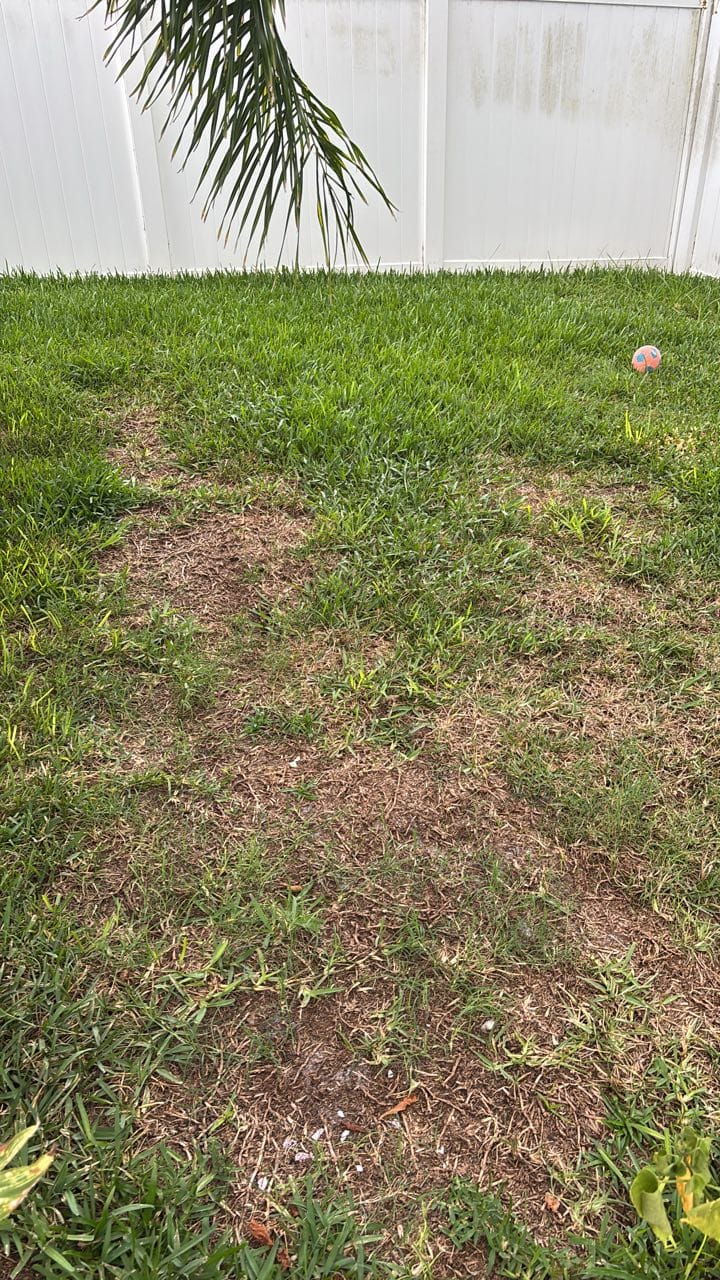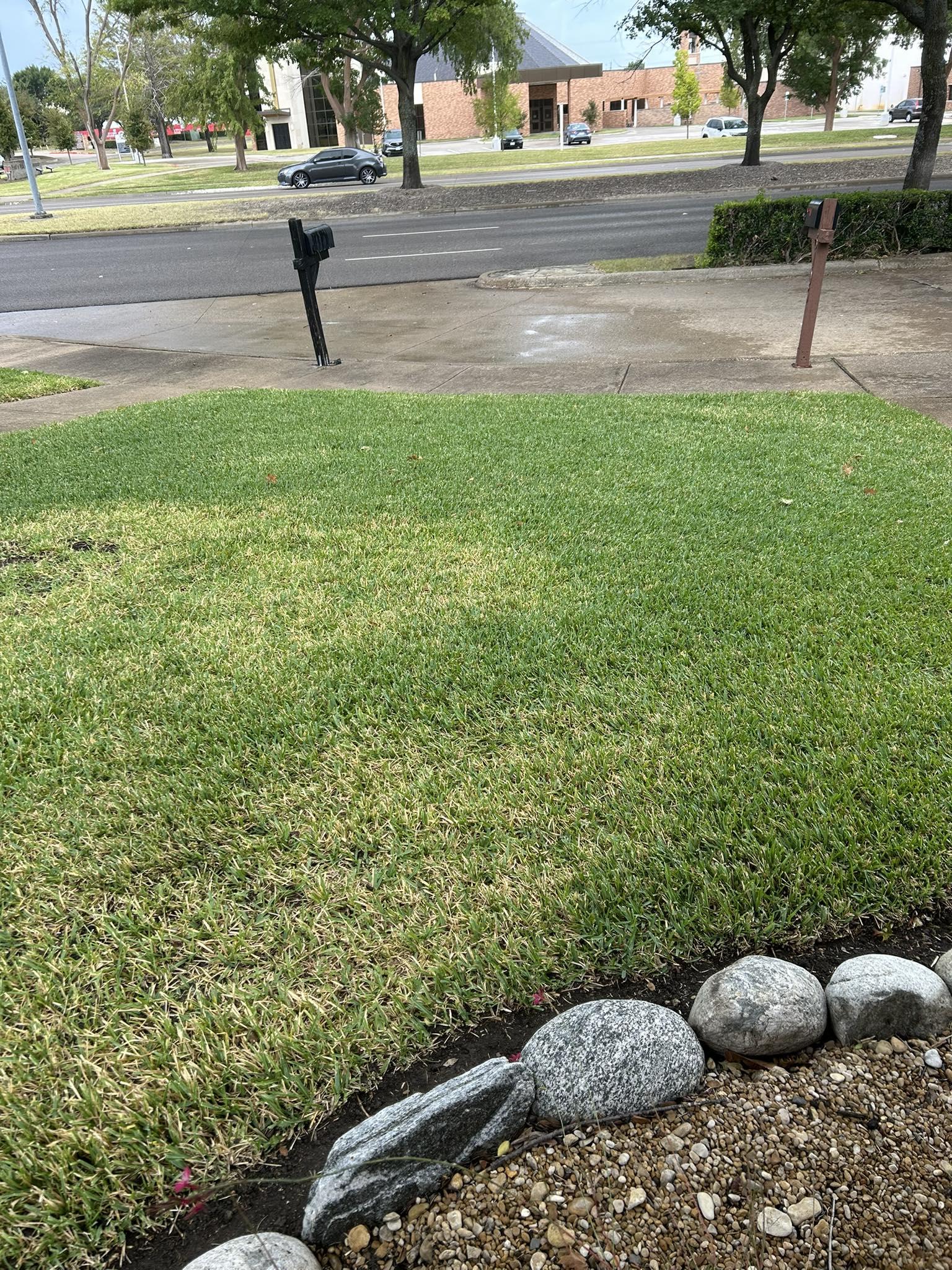
I could write a complete care guide for St. Augustine grass that you are growing in Texas. I am in many gardening forums, and this question regarding fertilization has been asked thousands of times. So I thought it would be worth writing a dedicated article on when to fertilize St Augustine grass in Texas and what type of fertilizer you should use.
Texas is a huge state that spans USDA Zones 6 through 10. This made me feel that before writing this guide, I should consult my grandpa (85), who has lived in Texas his whole life.
Climate varies across North, Central, South, and Coastal Texas. So I thought it would be better to share the fertilization timing for St. Augustine grass based on the region.
Fertilization Schedule — St. Augustine Grass (Texas)
You should follow this feeding schedule for your St Augustine grass in Texas:
| Region (Typical USDA Zones) | First Fertilizer (Timing) | Second Fertilizer (Timing) | Optional Fall Feeding (Timing) |
|---|---|---|---|
| North Texas (Zone 6b–8a) | Late April — when soil temps ~65°F | Mid-July | Early September |
| Central Texas / Hill Country (Zone 8a–8b) | Late March – Early April | June | Early September |
| Eastern / Coastal Texas (Zone 8b–9a) | Early March | May | September–October (optional) |
| South Texas / Rio Grande Valley (Zone 9a–10a) | Early March (earliest green-up) | May–June | October |
A more detailed chart is given at the end of this article that shows which type of fertilizer you should use along with timings.
Now, you might be wondering, why did I mention fall feeding as "optional"?
If you do not fertilize your St. Augustine grass lawn in the wintertime, it will be fine (no matter which zone you are in).
But if you feed your grass in the early fall, when the soil temperature is still good enough, this will happen:
- Just after feeding your grass in the early fall, it will produce some new foliage or leaves.
- But the tender growth will be damaged by frost.
My opinion is to avoid feeding your St Augustine grass in the early fall if you are from North or Central Texas.
Those who are from USDA Zone 9 and 10, can feed their grass in the early fall if they wish. A light fall feeding (around late September–early October) helps St. Augustine stay green longer and recover better in spring.
DO NOT fertilize St Augustine grass too early in spring ( when the grass is still in dormancy ).
This grass begins active growth when soil temperatures reach around 65°F. (Usually from late March to Early April)
Which fertilizer is good for St. Augustine grass in Texas
Use slow-release nitrogen with a ratio like 3-1-2 or 4-1-2 (e.g., 16-4-8).
Apply about ½ to 1 pound of nitrogen per 1,000 sq. ft. each feeding.
This is for the regular feeding. If you are more serious about your lawn, scroll down and read the rest of this article.
Note: Use a fertilizer labeled for Southern lawns or St. Augustine specifically — these formulas are designed to handle Texas heat.
Fertilizing 2 times a year is enough for St Augustine grass.
Do not get confused with nutrient deficiency and pest damage. For example, look at this picture below:

This is due to Chinch Bugs.
When you notice your grass turning pale or weak before the fall, do not use nitrogen-based fertilizer. ( I know nitrogen is good for turning foliage green. But before fall, this is not good for your grass. It's time to strengthen roots before winter. ) - Use low-nitrogen fertilizer.

In a week, it will be November (As my grandpa took this picture last week). In a few weeks, his entire yard will be brown, and this is completely normal. - He is from North Texas.
My grandpa fertilizes his St. Augustine grass well in summer, giving it enough nutrients to last through dormancy.
- 16-4-8: Great all-around for color and root health.
- 15-5-10: Especially in spring.
- 20-0-10: Nitrogen-heavy for summer push, low P to avoid excess buildup.
This chart has enough data that you need for your St. Augustine:
| Ratio | Best For | Example Products | Coverage (per bag) | You should know |
|---|---|---|---|---|
| 16-4-8 | Overall health, weed/disease resistance | Andersons PGF Complete (40 lb) | 10,000 sq ft | It will help to quick green-up in 1 week |
| 15-5-10 | Spring startup in North/Central Texas | Nitro-Phos Imperial Lawn Fertilizer (40 lb) | 5,000–7,500 sq ft | Local Texas favorite. |
| 20-0-10 | Summer growth boost | Lawn Synergy Almighty (liquid or granular) | Varies (5,000 sq ft) | Fast absorption, and this is the best for Houston/South Texas humidity. |
| 11-2-2 (Organic) | Safe, slow-release; pet/kid-friendly | Scotts Natural Lawn Food (36 lb) | 5,000 sq ft | It builds soil microbes over time, and it won't burn your grass. |
| 24-0-11 | High-nitrogen maintenance | Sunniland St. Augustine Fertilizer (50 lb) | 7,500 sq ft | Best for dense turf, and it is available at big-box stores. |
Kindly note that I am not affiliated with any of those products. Please read reviews online before purchasing any of those.
I talked with some lawn care agencies, landscapers, and I tried my best to summarize the information in one article.



